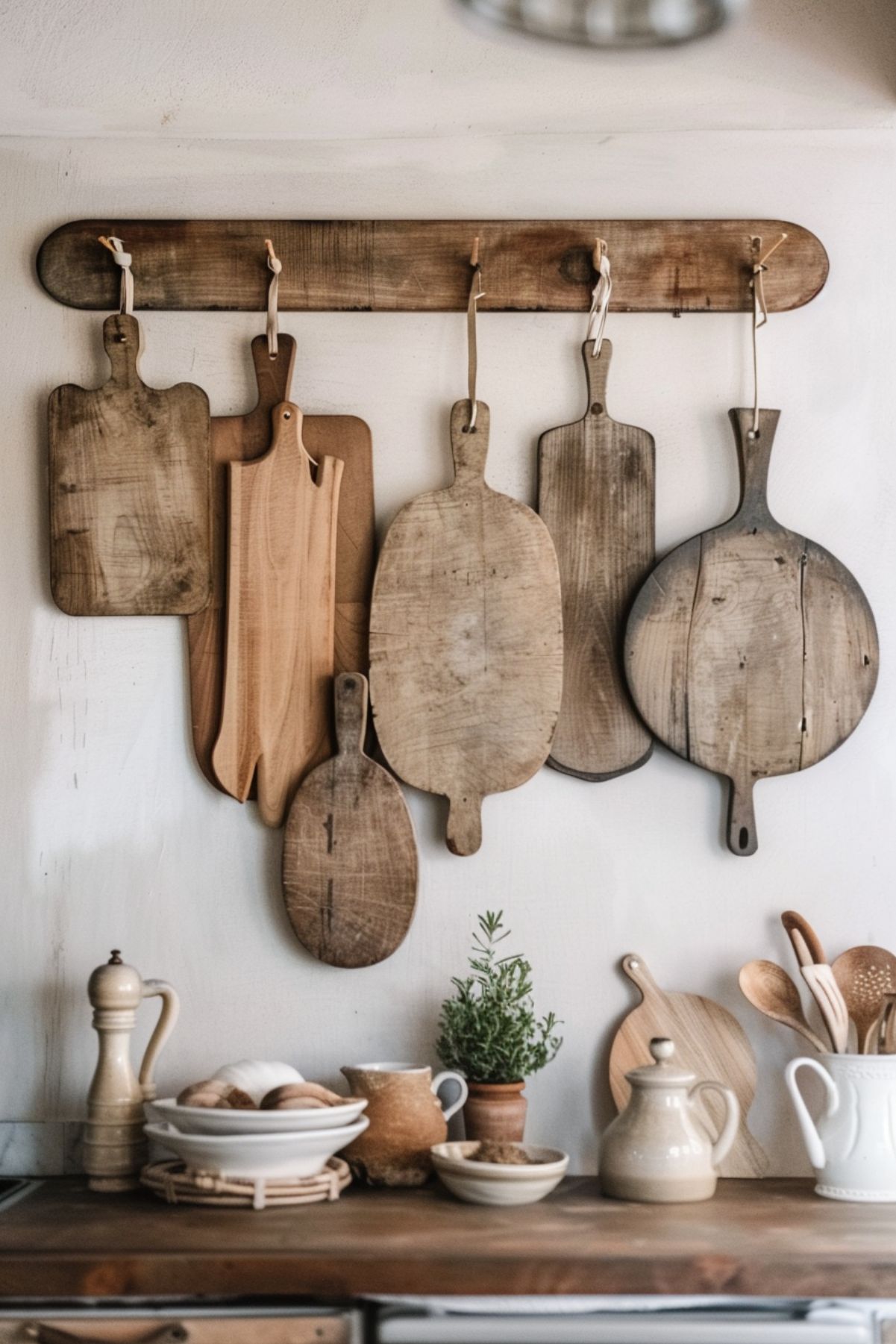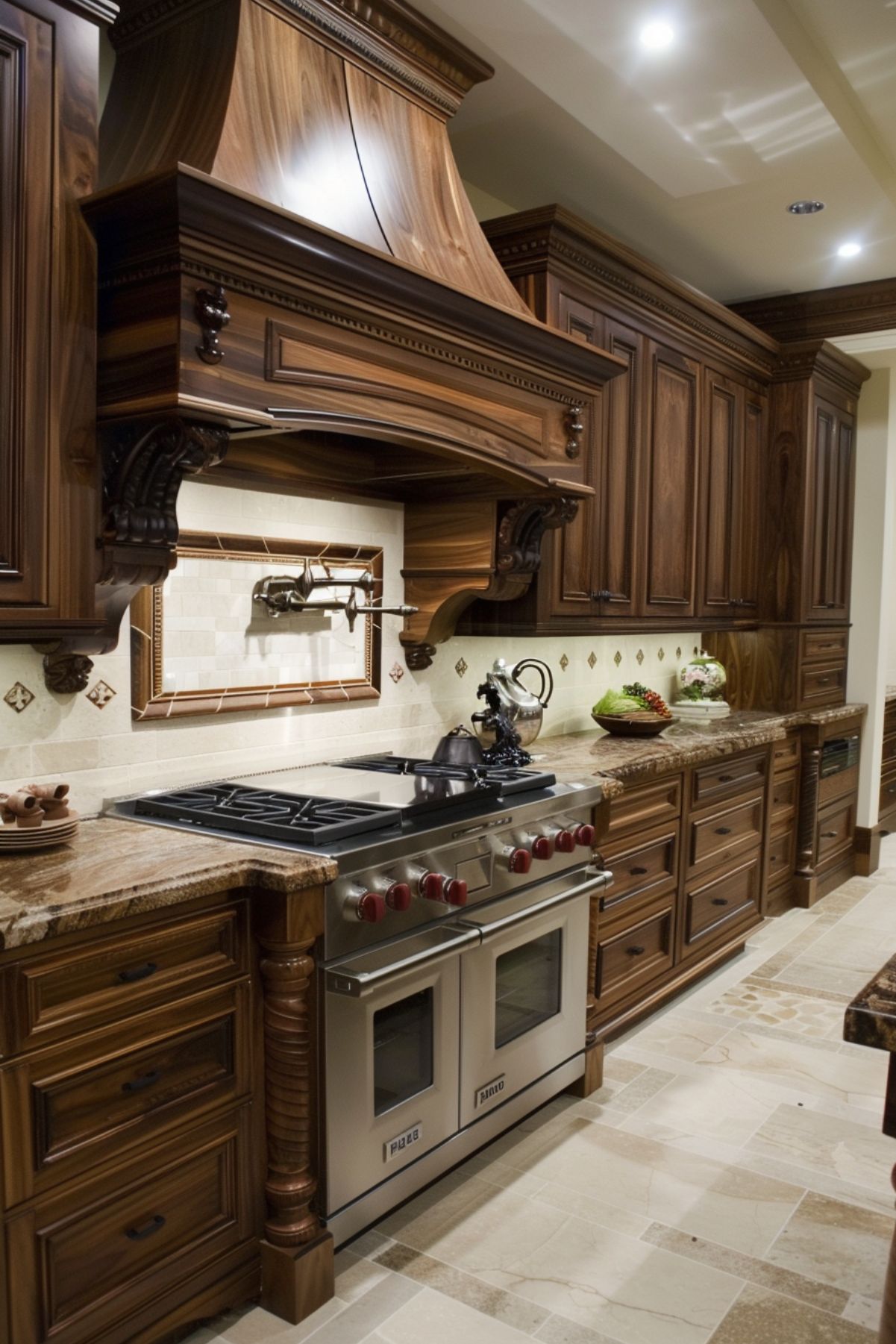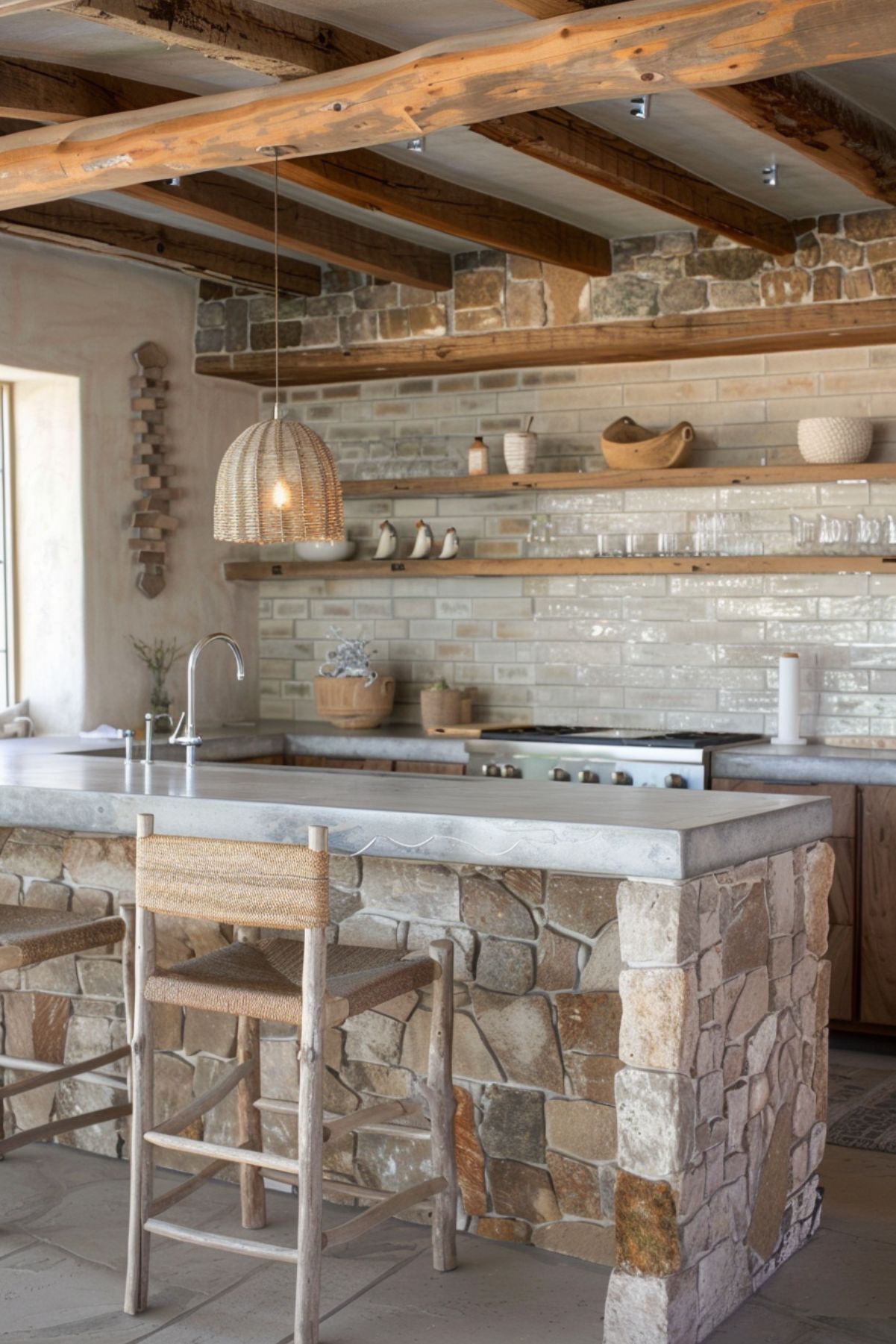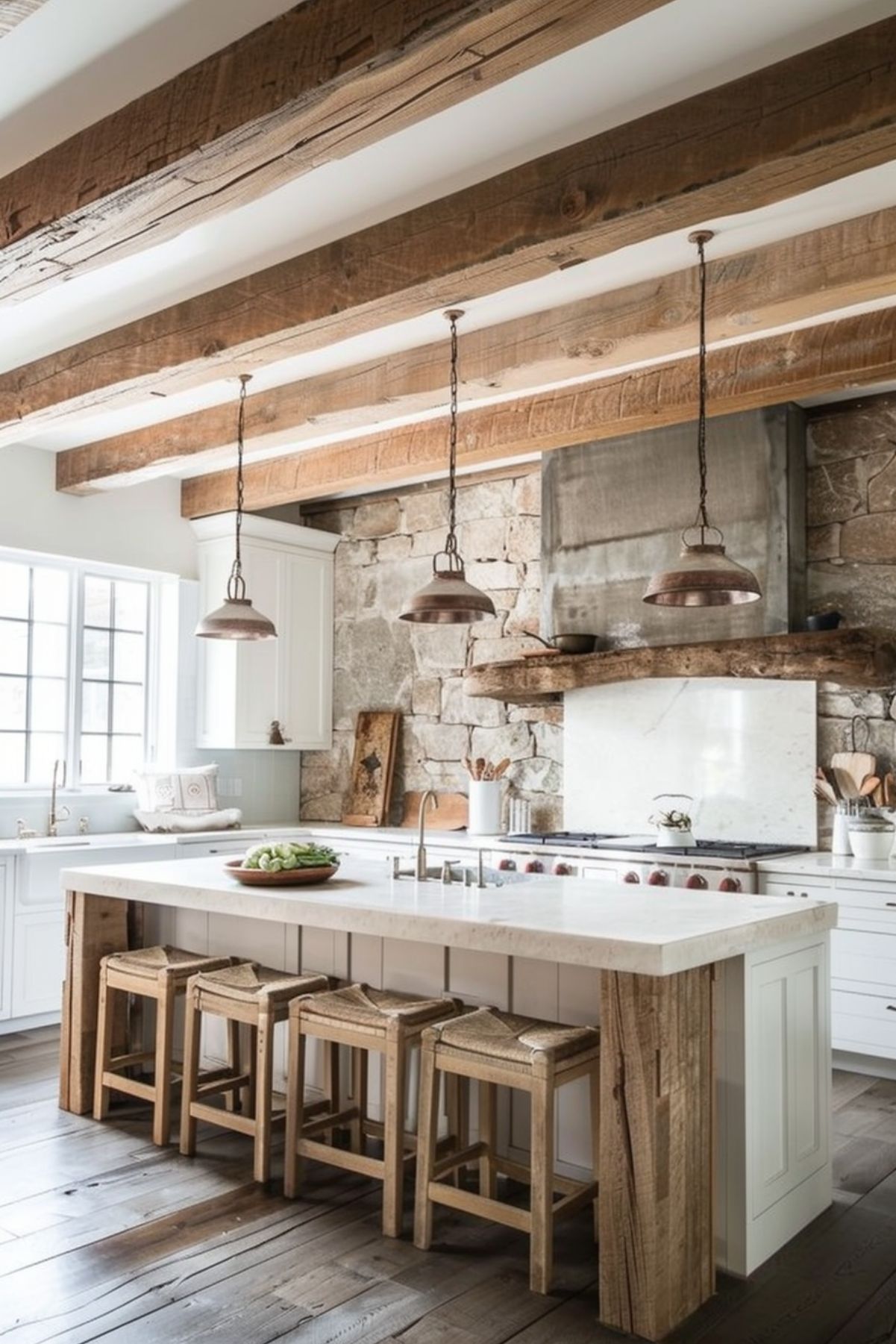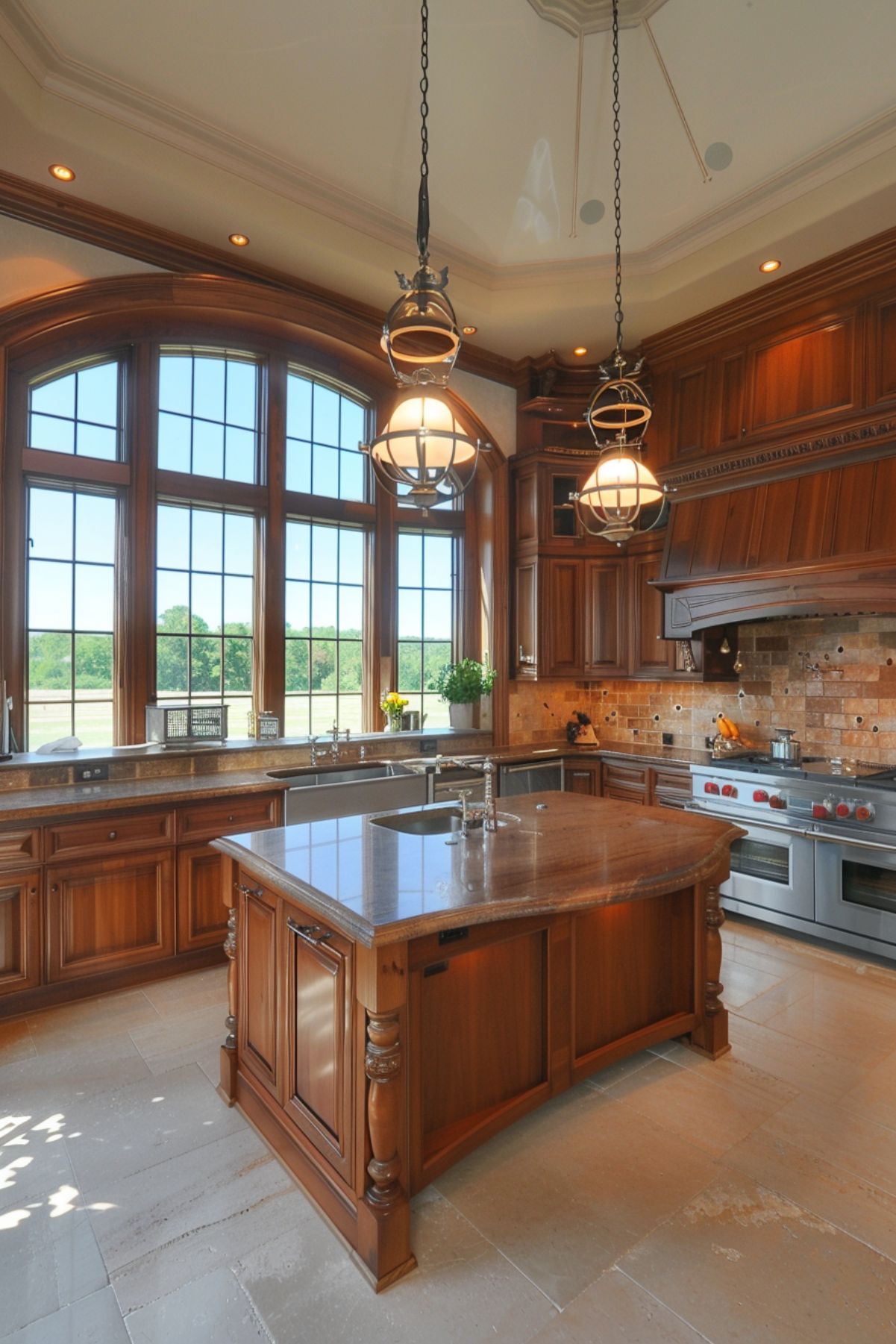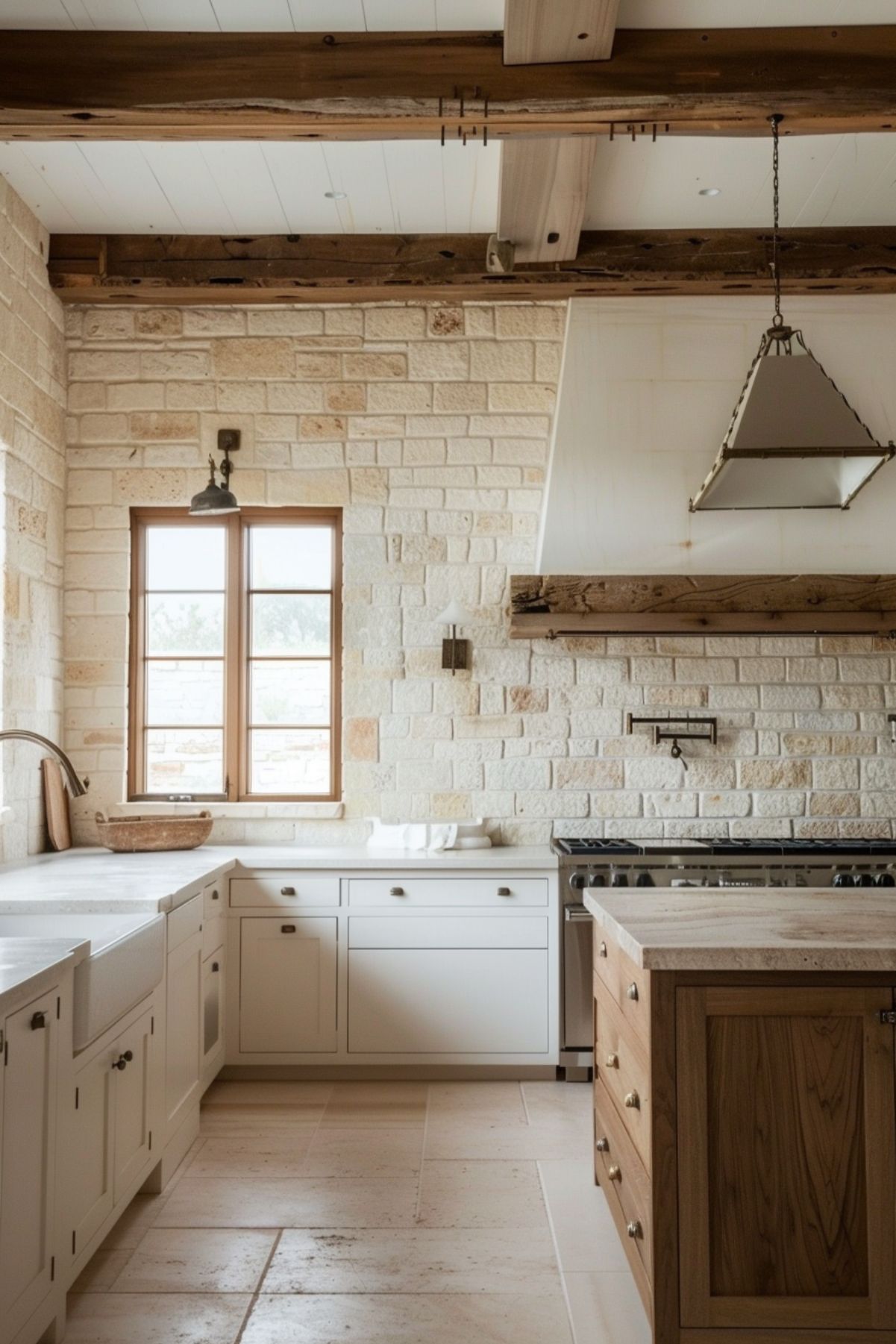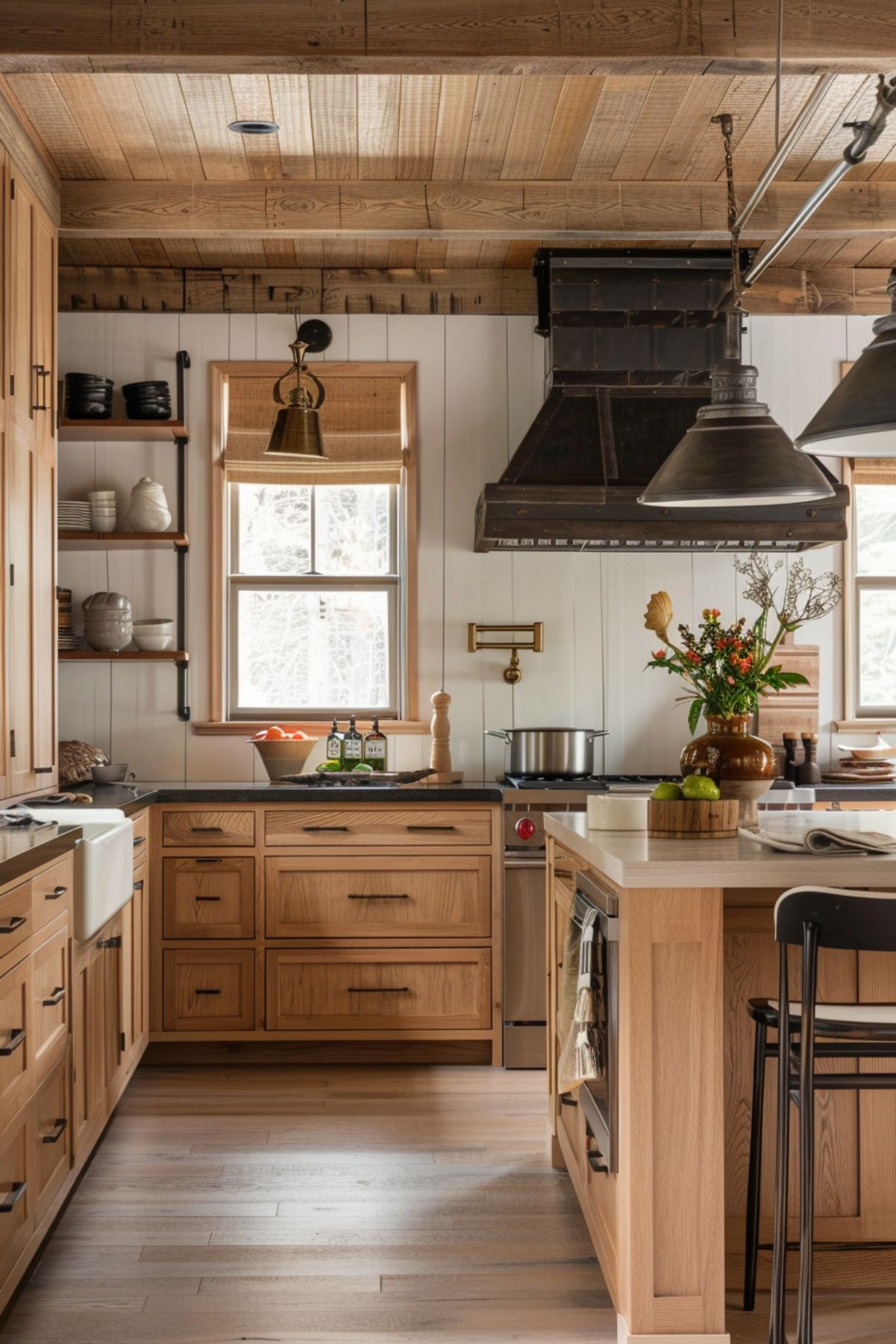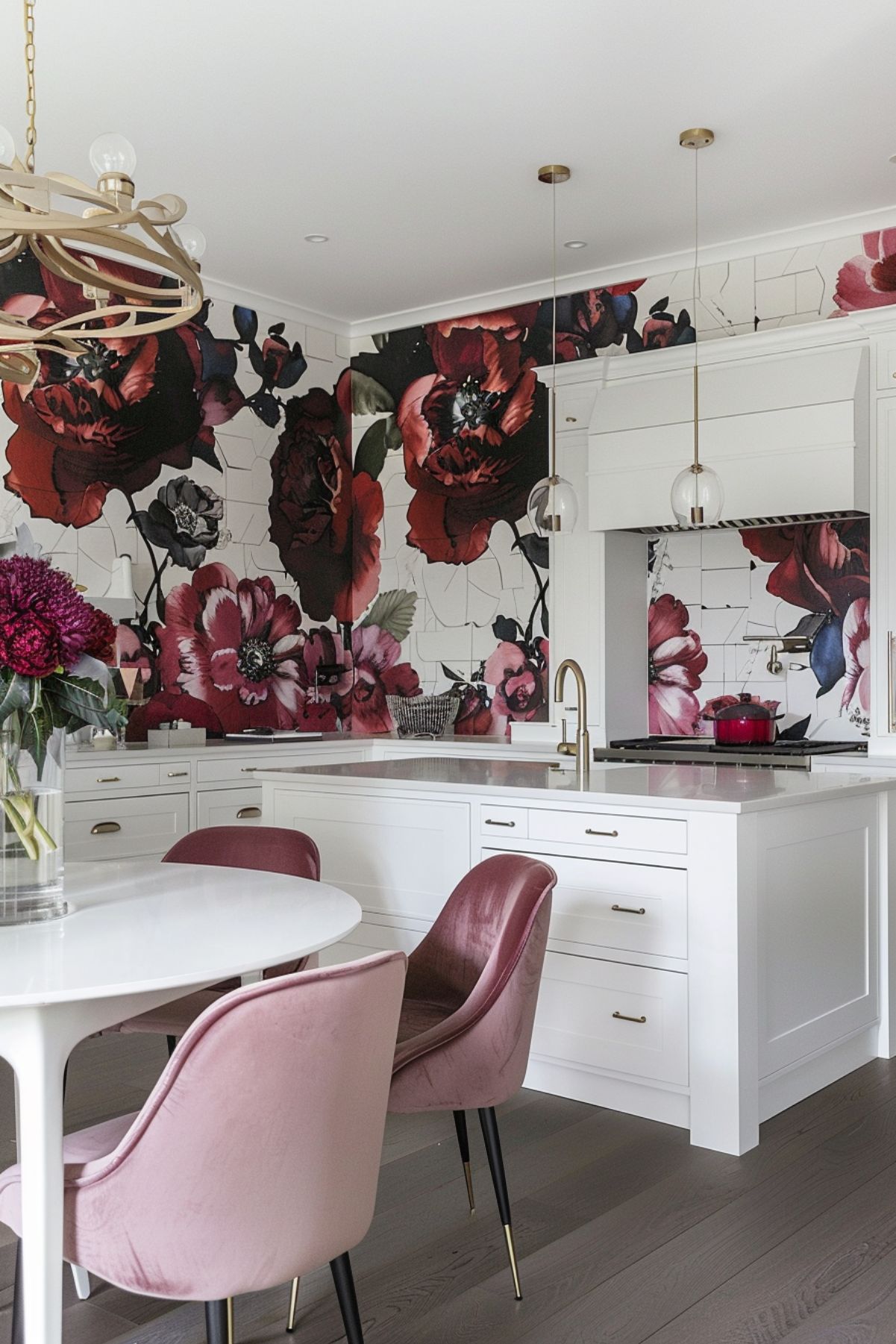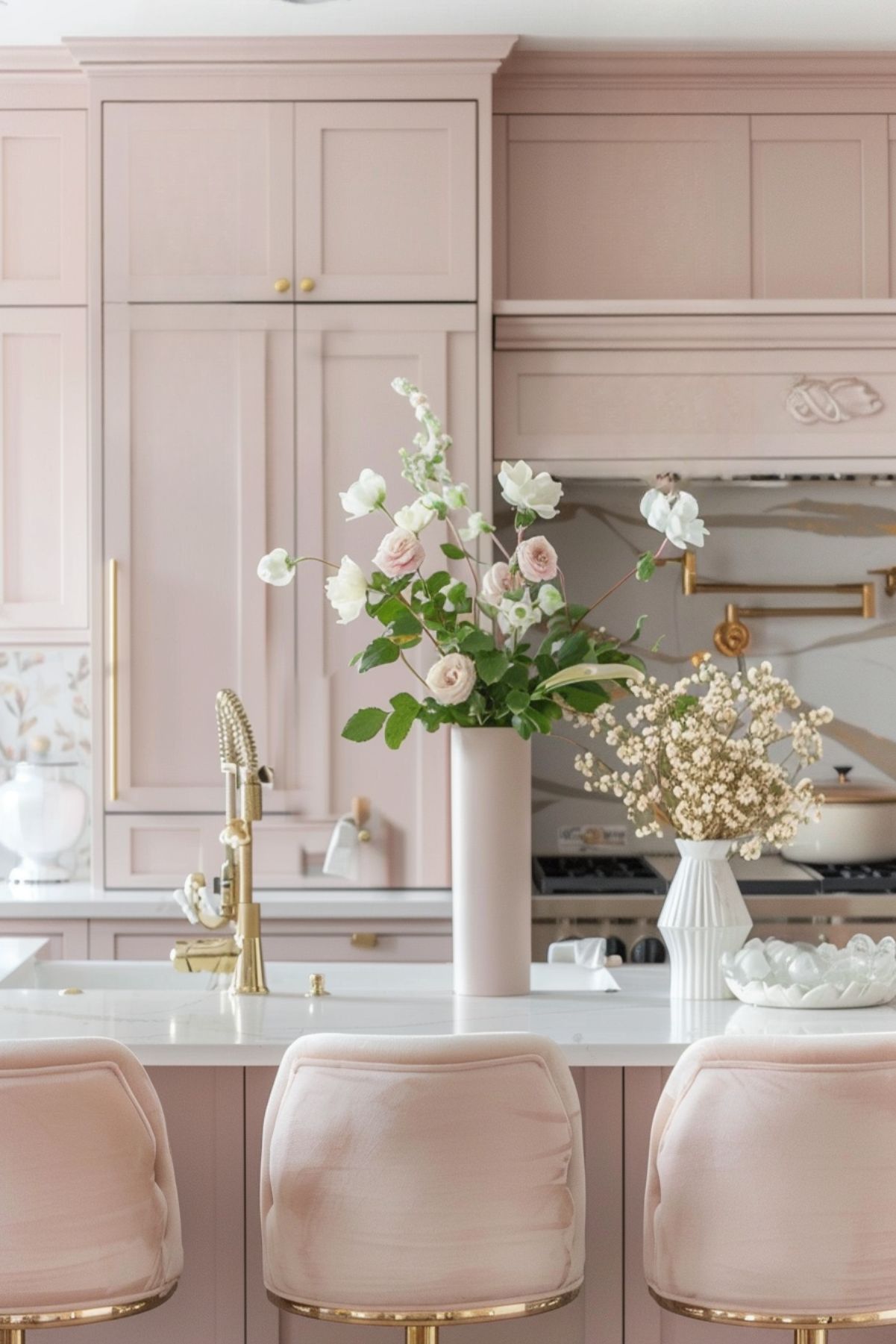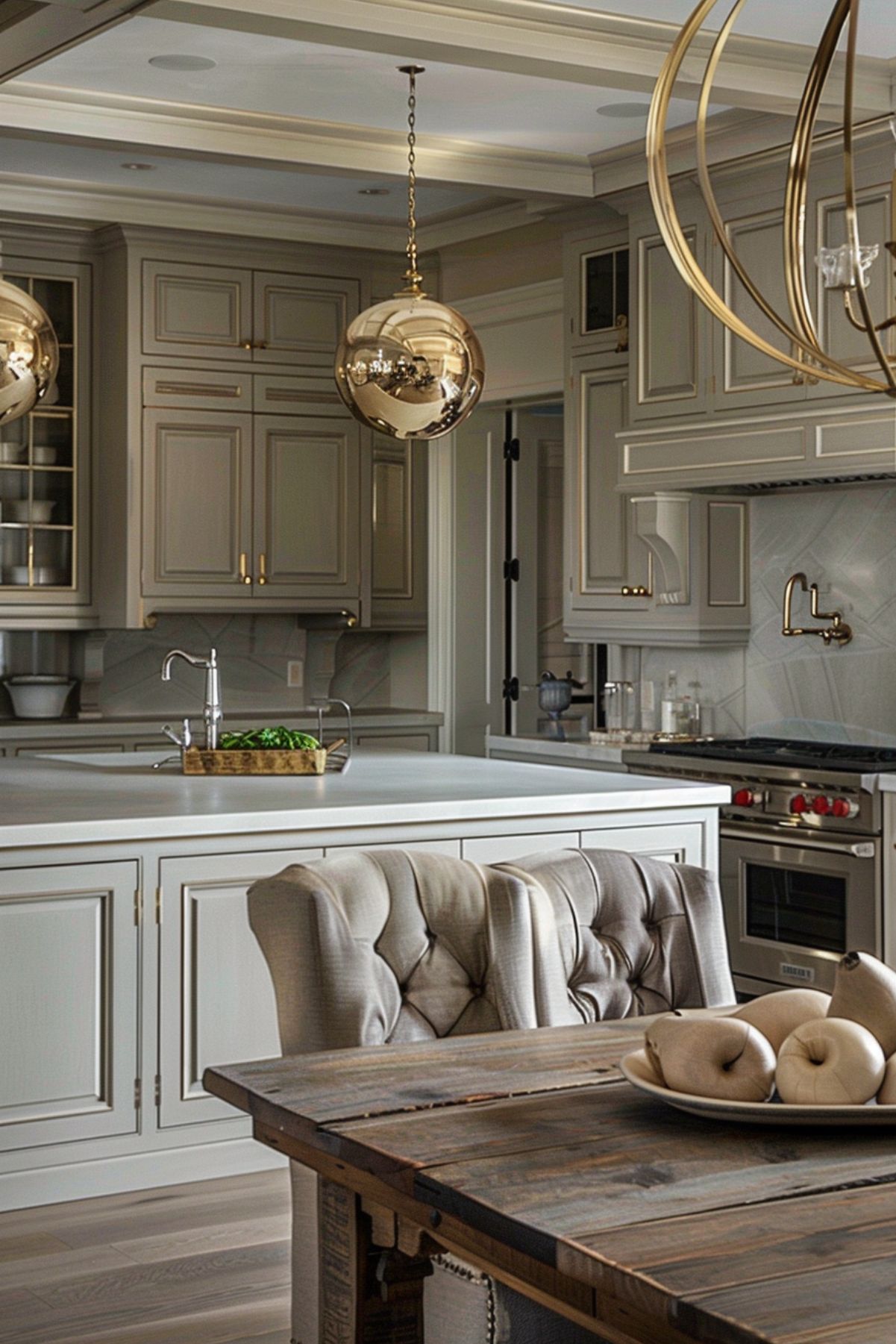How to Incorporate Natural Materials into Your Kitchen Design: Tips and Ideas
Natural materials have become increasingly popular in kitchen design. Incorporating natural elements into your kitchen can create a warm, inviting space that is both functional and aesthetically pleasing.
Natural materials such as wood, stone, and natural fibers can add texture, depth, and character to your kitchen design.
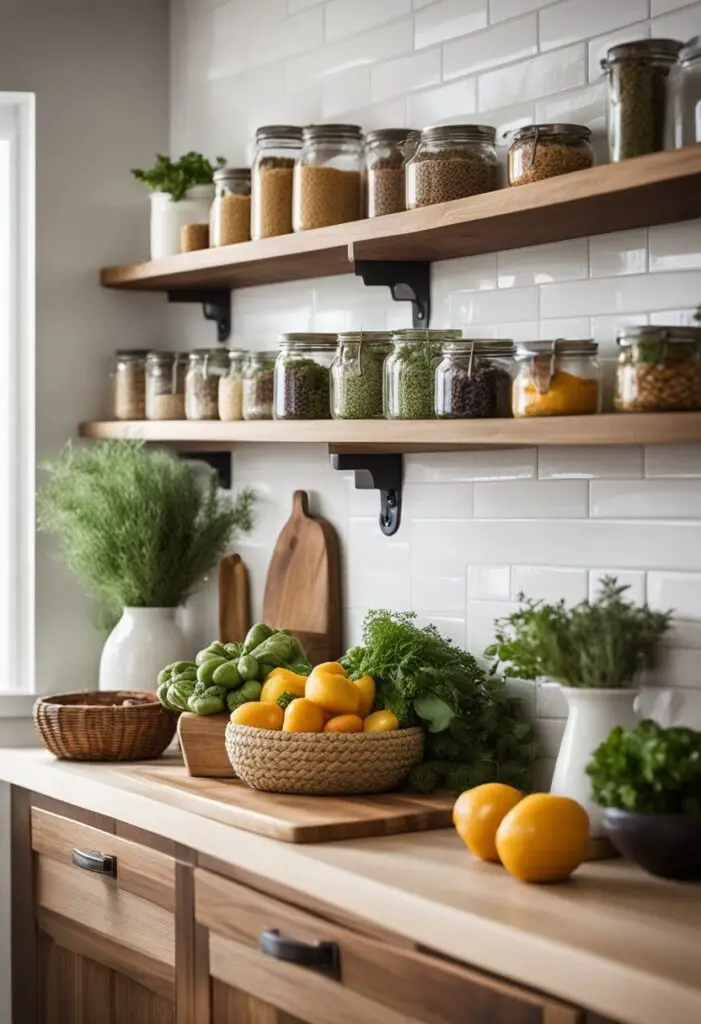
Understanding the benefits of using natural materials in your kitchen design is the first step in creating a natural kitchen.
Natural materials are durable, sustainable, and can add value to your home.
Designing with natural materials such as wood can add warmth and texture to your kitchen design. Incorporating stone elements such as granite or marble can add a touch of luxury to your kitchen.
Using natural fibers such as jute or sisal can add a natural element to your kitchen design. Metal accents can also be used to add a touch of sophistication to your kitchen design.
Key Takeaways
- Understanding the benefits of natural materials is key to creating a natural kitchen.
- Incorporating wood, stone, natural fibers, and metal accents can add texture, depth, and character to your kitchen design.
- Sustainable practices should be considered when designing with natural materials to ensure longevity and maintenance.
Understanding Natural Materials
When incorporating natural materials into your kitchen design, it’s important to understand what natural materials are and the benefits they offer.
This section will cover the types of natural materials and the benefits of using them.
Types of Natural Materials
Natural materials are those that are derived from nature, such as wood, stone, and ceramic. These materials are often used in kitchen design due to their durability, versatility, and aesthetic appeal.
Wood: Wood is a popular natural material used in kitchen design. It is available in a wide range of colors and textures, making it easy to incorporate into any kitchen design.
Wood is also durable, making it ideal for use in high-traffic areas like the kitchen.
Stone: Stone is another popular natural material used in kitchen design. It is available in a variety of colors and textures, and can be used for everything from countertops to flooring.
Stone is also heat-resistant, making it ideal for use in the kitchen.
Ceramic: Ceramic is a versatile natural material that can be used for everything from backsplashes to flooring. It is available in a wide range of colors and patterns, making it easy to incorporate into any kitchen design.
Benefits of Using Natural Materials
Using natural materials in your kitchen design offers a number of benefits, including:
Durability: Natural materials are often more durable than synthetic materials, making them ideal for use in high-traffic areas like the kitchen.
Aesthetic Appeal: Natural materials offer a unique and natural aesthetic that cannot be replicated with synthetic materials.
Versatility: Natural materials can be used for a wide range of kitchen design elements, including countertops, flooring, and backsplashes.
Sustainability: Natural materials are often more sustainable than synthetic materials, making them a more environmentally-friendly choice for your kitchen design.
Designing with Wood

Wood is a popular material for kitchen design due to its natural beauty and durability.
When choosing wood for your kitchen, it’s important to consider the type of wood, its grain, and color.
Here are some factors to consider when designing with wood in your kitchen:
Choosing the Right Wood
There are many types of wood to choose from, each with its own unique characteristics.
Oak, maple, cherry, and walnut are popular choices for kitchen cabinets and flooring.
Oak is known for its prominent grain and durability, while maple is a lighter wood that is often used for modern kitchen designs.
Cherry has a rich, warm color and a subtle grain, making it an elegant choice for traditional kitchens.
Walnut is a darker wood with a rich, warm color that is often used for high-end kitchens.
When choosing wood for your kitchen, consider the style and color scheme of your kitchen.
If you have a modern kitchen, you may want to choose a lighter wood like maple or birch. For a traditional kitchen, a darker wood like cherry or walnut may be more appropriate.
Wood Finishes and Treatments
After choosing the right wood for your kitchen, it’s important to consider the finish and treatment of the wood.
A clear finish will showcase the natural beauty of the wood, while a stain can change the color of the wood to match your kitchen’s color scheme.
It’s also important to consider the durability of the wood finish.
A high-gloss finish may look beautiful, but it may show scratches and wear more easily than a matte finish.
A distressed or weathered finish can add character to your kitchen, but it may also be more prone to wear and tear.
In addition to finishes, it’s important to consider treatments like sealing and oiling.
Sealing the wood can help protect it from moisture and stains, while oiling can help bring out the natural beauty of the wood.
Incorporating Stone Elements

Stone is a popular natural material that can add a touch of elegance and sophistication to any kitchen design. Here are some tips for incorporating stone elements into your kitchen design.
Selecting Stone Types
When selecting stone for your kitchen design, there are a few things to consider.
First, think about the overall style of your kitchen.
If you have a modern kitchen, you may want to choose a sleek and polished stone, such as granite or marble.
If you have a more rustic or traditional kitchen, you may want to choose a rougher and more textured stone, such as slate or sandstone.
Second, consider the durability of the stone.
Some stones, such as marble, are more prone to scratches and stains than others.
If you have a busy kitchen with lots of traffic and activity, you may want to choose a more durable stone, such as granite or quartz.
Finally, think about the color and pattern of the stone.
You want to choose a stone that complements the other elements of your kitchen, such as the cabinets, flooring, and appliances.
If you have a neutral color scheme, you may want to choose a stone with a bold pattern or color to add interest and texture to the space.
Stone Maintenance and Care
Once you have selected your stone, it is important to properly maintain and care for it to ensure that it lasts for many years to come. Here are some tips for stone maintenance and care:
- Clean up spills immediately to prevent staining.
- Use a cutting board to prevent scratches and nicks.
- Avoid placing hot pots and pans directly on the stone surface to prevent cracking.
- Use a mild soap and water solution to clean the stone regularly.
- Avoid using acidic or abrasive cleaners, as they can damage the stone.
Using Natural Fibers
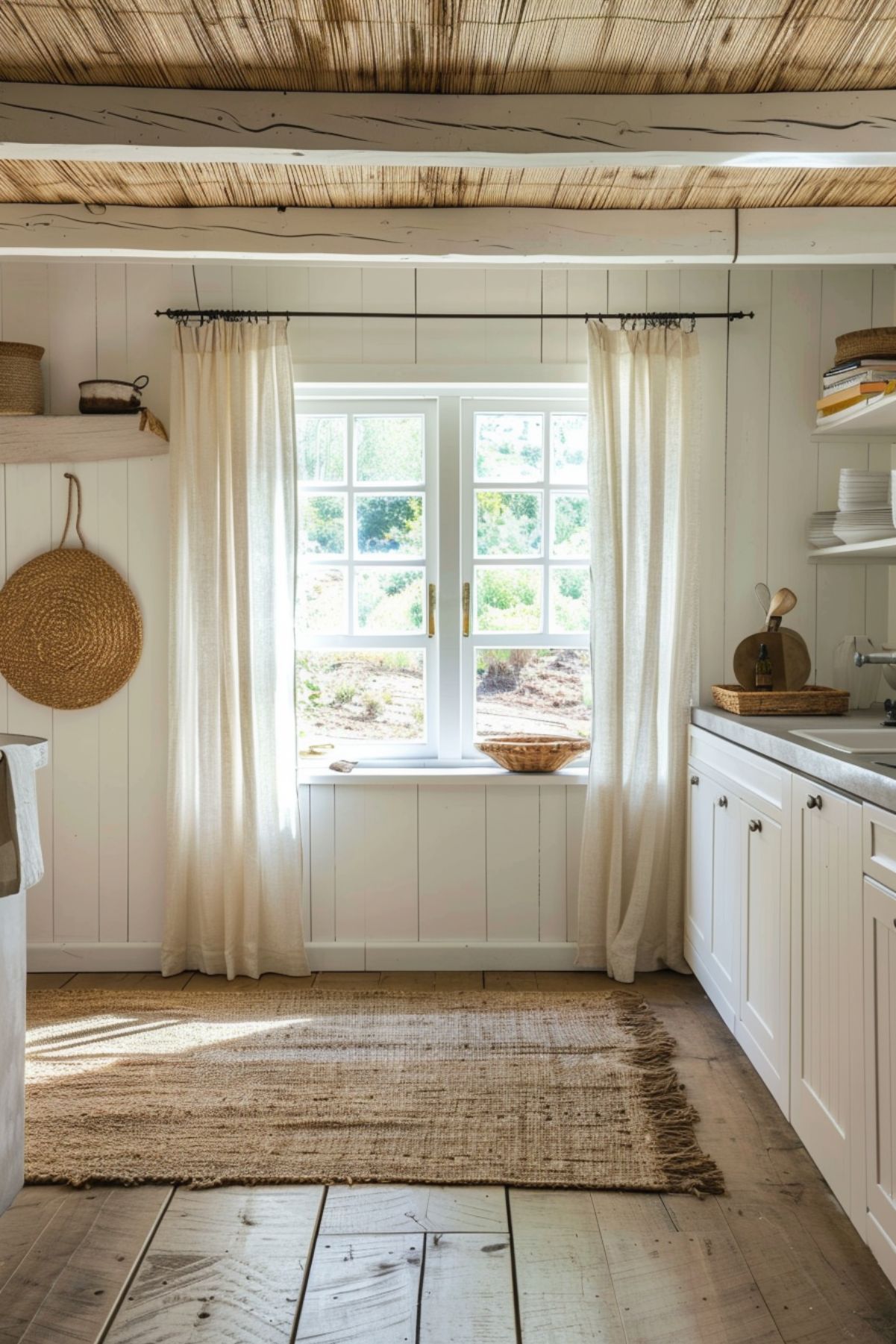
Natural fibers are a great way to incorporate natural materials into your kitchen design. They are renewable, biodegradable, and add texture and warmth to any space.
Here are some ways to use natural fibers in your kitchen design.
Types of Natural Fibers
There are many types of natural fibers to choose from, including cotton, linen, hemp, jute, sisal, and wool.
Each fiber has its unique characteristics and uses. For example, cotton is soft and breathable, making it perfect for kitchen towels and napkins.
Linen is durable and absorbent, making it ideal for kitchen aprons and tablecloths.
Meanwhile, hemp is strong and resistant to mold and mildew, making it perfect for kitchen rugs and mats.
Integrating Textiles in Kitchen Design
Integrating textiles into your kitchen design is easy and affordable. Here are some ways to do it:
- Kitchen towels and napkins: Use cotton or linen towels and napkins in natural colors or patterns to add texture and warmth to your kitchen.
- Aprons and oven mitts: Use linen or cotton aprons and oven mitts in natural colors or patterns to add a rustic touch to your kitchen.
- Tablecloths and placemats: Use linen or hemp tablecloths and placemats in natural colors or patterns to create a cozy and inviting atmosphere in your kitchen.
- Rugs and mats: Use jute or sisal rugs and mats in natural colors or patterns to add texture and warmth to your kitchen floor.
Metal Accents in Kitchen Design

Metal accents are a popular choice in modern kitchen designs. They add a sleek and contemporary look to any kitchen. Here are some popular metal options to consider when designing your kitchen:
Popular Metal Options
- Stainless Steel: Stainless steel is a popular choice for kitchen appliances and hardware. It is durable, easy to clean, and gives a modern look to any kitchen.
- Copper: Copper is a trendy metal option that adds warmth and character to a kitchen. It can be used for hardware, fixtures, and even cookware.
- Brass: Brass is another metal option that adds warmth to a kitchen. It is often used for hardware and light fixtures.
- Aluminum: Aluminum is a lightweight and durable metal option that is often used for kitchen backsplashes and countertops.
Combining Metals with Other Materials
When incorporating metal accents into your kitchen design, it is important to consider how they will complement other materials in your kitchen. Here are some tips for combining metals with other materials:
- Wood: Metal accents can be paired with wood to create a warm and inviting look. For example, a copper light fixture can be paired with wood cabinets to create a rustic feel.
- Stone: Metal accents can also be paired with stone to create a modern and sleek look. For example, stainless steel hardware can be paired with a marble countertop to create a contemporary feel.
- Glass: Metal accents can be paired with glass to create a sophisticated look. For example, brass hardware can be paired with glass cabinet doors to create a high-end feel.
Indoor Plants and Greenery
Adding indoor plants and greenery to the kitchen is an easy way to incorporate natural elements.
Plants can help purify the air, add color, and create a calming atmosphere.
Some popular options for indoor plants in the kitchen include herbs like basil, mint, and rosemary.
These herbs can be used in cooking and add a fresh scent to the space.
Another option for adding greenery to the kitchen is to create a vertical garden.
This can be done by installing shelves or hanging planters on the walls.
Succulents and air plants are great options for a vertical garden as they require minimal maintenance and can thrive in small spaces.
Maximizing Natural Light
Maximizing natural light in the kitchen is another way to bring nature into the space.
Natural light can make the kitchen feel brighter and more spacious.
One way to maximize natural light is to remove heavy window treatments and opt for sheer curtains or blinds instead.
Another way to increase natural light is to add a skylight or a window above the sink.
This can bring in additional light and provide a view of the outdoors.
Additionally, choosing light-colored cabinets and countertops can reflect natural light and make the space feel brighter.
Sustainable Practices
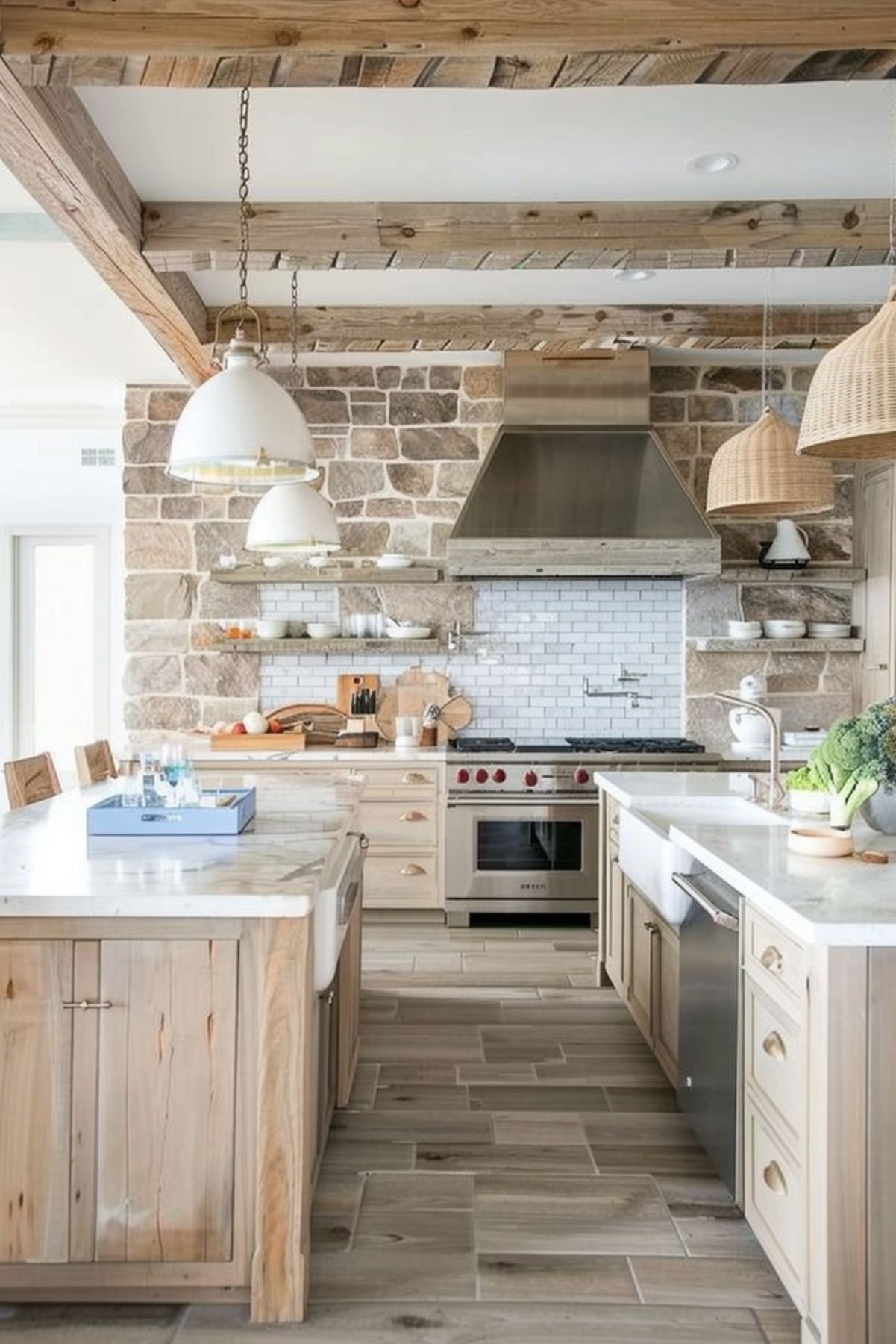
When incorporating natural materials into your kitchen design, it’s important to also consider sustainable practices.
By making eco-friendly choices, you can create a kitchen that not only looks beautiful but also helps reduce your carbon footprint and promote a healthier living environment.
Eco-Friendly Material Choices
One way to incorporate natural materials into your kitchen design is by choosing eco-friendly materials.
Look for materials that are renewable, recycled, or reclaimed.
For example, bamboo is a fast-growing and renewable material that can be used for flooring, cabinets, and countertops.
Another option is reclaimed wood, which not only adds character to your kitchen but also helps reduce waste.
Recycled glass countertops are also a great choice, as they are made from recycled glass and are durable and easy to clean.
Energy-Efficient Kitchen Appliances
Another way to make your kitchen more sustainable is by choosing energy-efficient appliances.
Look for appliances with the Energy Star label, which means they meet energy-efficient guidelines set by the U.S. Environmental Protection Agency.
These appliances use less energy and can help reduce your energy bills.
Additionally, consider using a convection oven instead of a traditional oven, as it uses less energy and cooks food more quickly.
Accessorizing with Natural Materials

In addition to incorporating natural materials into the structure of your kitchen, you can also accessorize with natural materials to create a cohesive and inviting design.
Here are some ideas for incorporating natural materials into your kitchen accessories:
- Wooden Cutting Boards: Upgrade your plastic cutting boards with wooden ones. Not only are they more durable and long-lasting, but they also add a warm and natural touch to your kitchen. Plus, wooden cutting boards can be used as serving platters for cheese and meats, making them a versatile addition to your kitchen.
- Natural Fiber Rugs: Add a natural fiber rug to your kitchen floor for an earthy and organic touch. Jute, sisal, and seagrass are all great options for durable and sustainable rugs that can withstand the wear and tear of a busy kitchen.
- Ceramic Canisters: Swap out your plastic or metal canisters for ceramic ones with natural finishes like stone or wood. These canisters not only keep your pantry organized, but they also add a touch of natural texture to your kitchen.
- Live Plants: Bring some life into your kitchen with live plants. Not only do they purify the air, but they also add a pop of color and texture to your space. Herbs like basil and mint are great options for a functional and fragrant addition to your kitchen.
- Stone Coasters: Protect your countertops and add natural texture to your kitchen with stone coasters. They come in a variety of colors and finishes, making them a versatile accessory for any kitchen design.
Maintenance and Longevity

Caring for Natural Materials
Natural materials used in kitchen design require proper care and maintenance to ensure their longevity.
For example, wood countertops should be sealed with a food-safe finish to prevent damage from moisture and stains.
Regular cleaning with a mild soap and water solution and avoiding harsh chemicals is also important to maintain the beauty and integrity of natural materials.
It is recommended to avoid cutting directly on natural stone countertops as it can scratch the surface. Instead, use a cutting board to protect the stone.
Durability and Repair
When properly cared for, natural materials used in kitchen design can last for many years.
However, some materials are more durable than others. For example, granite is a highly durable natural stone that is resistant to scratches and heat, while marble is softer and more prone to scratches and stains.
If damage does occur, it is important to address it promptly to prevent further damage.
For minor scratches or stains, sanding or polishing may be able to restore the surface. For more serious damage, it may be necessary to replace or repair the affected area.
In summary, incorporating natural materials into kitchen design can add beauty and warmth to the space.
Proper care and maintenance are necessary to ensure the longevity of these materials.
It is important to choose materials that are appropriate for the intended use and to address any damage promptly to prevent further issues.
